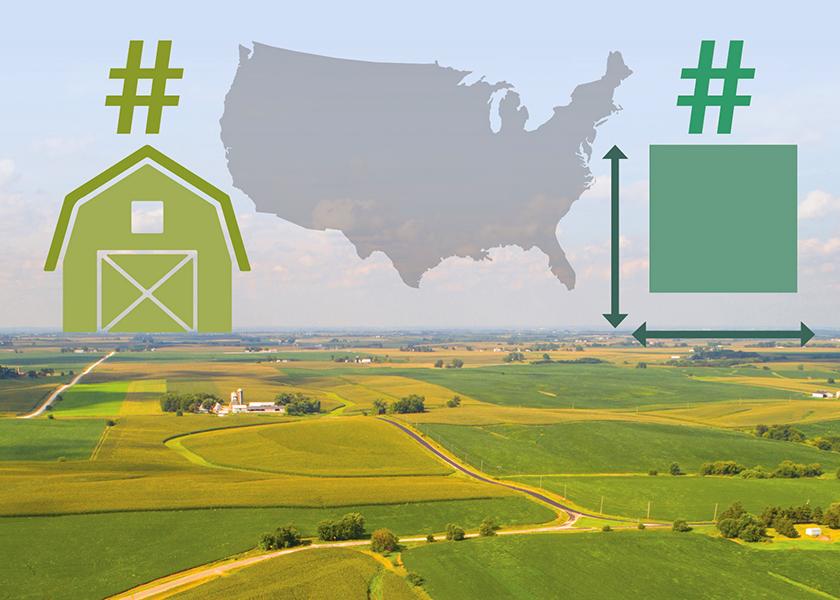How Many Farms Are in the U.S.?

Total land in farms decreased 1.9 million acres to 893,400,000 acres in 2022 versus 2021. Here is other noteworthy farmland data, courtesy of USDA’s Farms and Land in Farms 2022 Summary.
2.003 million: The number of U.S. farms, which is down 9,350 farms from 2021. The number of farms increased in all sales classes except the $1,000-$9,999 and $10,000-$99,999 sales classes.
51%: The amount of U.S. farms with less than $10,000 in sales. Meanwhile, 81% of all farms had less than $100,000 in sales. In 2022, 7.5% of all farms had sales of $500,000 or more.
446: The average size of U.S. farms. That’s up from 445 acres in 2021. Average farm size increased in the $1,000,000 or more sales class and decreased or remained unchanged in all other sales classes.
#1: Wyoming’s rank in the state with the largest average farm size (2,395 acres)
Other states with large average farm sizes include:
- Montana - 2,137 acres
- Nevada - 1,788 acres
- New Mexico - 1,660 acres
- North Dakota - 1,514 acres
- South Dakota - 1,469 acres
- Arizona - 1,388 acres
- Nebraska - 1,011 acres
Read More Farmland News:
Will Farmland Prices Finally Cool?
Owning Farmland Is Now Cool, Even If You Don't Farm
Iowa Farmland Values Up Another 17% in 2022
Peak or Plateau? Answers to 7 of the Big Questions Driving the Wild Farmland Market







